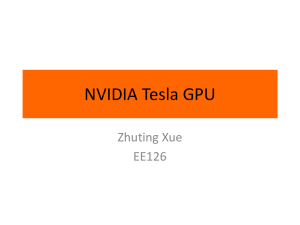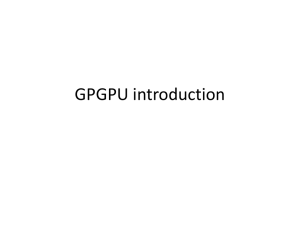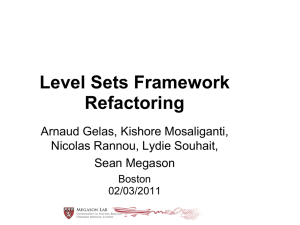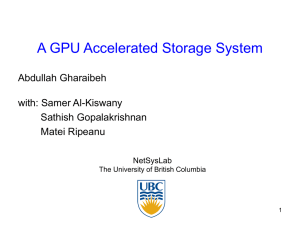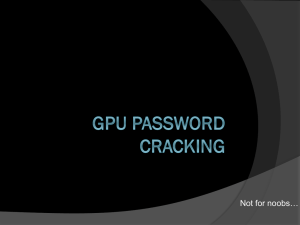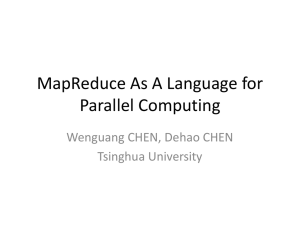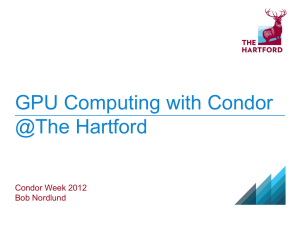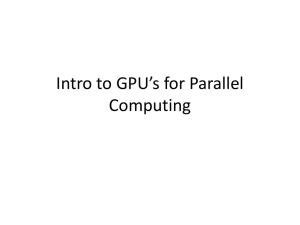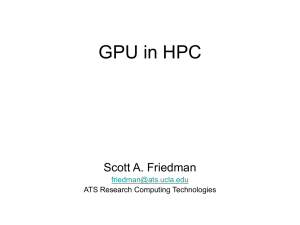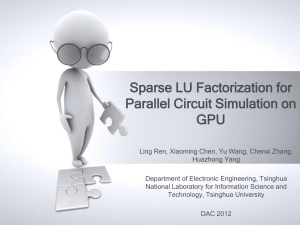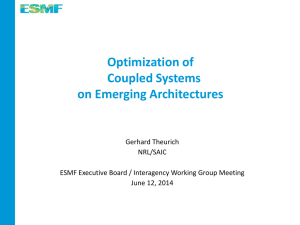PPTX
advertisement
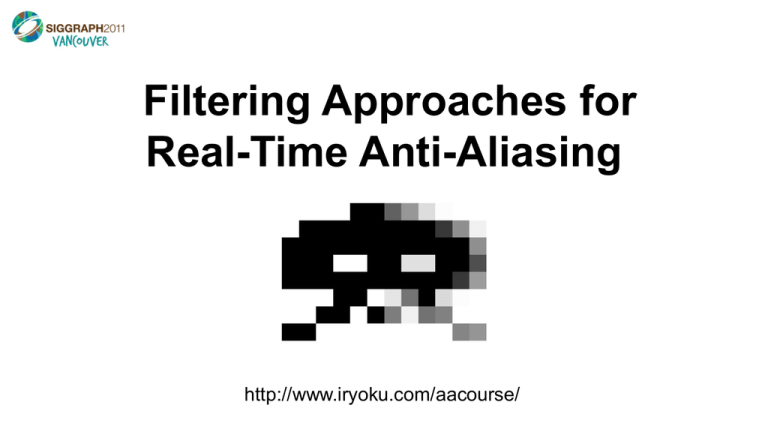
Filtering Approaches for Real-Time Anti-Aliasing http://www.iryoku.com/aacourse/ Filtering Approaches for Real-Time Anti-Aliasing Hybrid CPU/GPU MLAA (on the Xbox 360) Pete Demoreuille pbd@pod6.org MLAA • Algorithm well described by this point • As well as benefits and drawbacks • This talk focuses on – Shipping hybrid CPU/GPU implementation – Assorted edge detection routines – Integration and use in engine Example Results Example Results Example Results Example Results Motivations • • • • Engine uses variant of deferred rendering GPU time at a premium, prefer fixed cost SSAA (!) originally used, needed alternative Complicated by time pressure – Added right before shipping Costume Quest – Aspects of implementation show this Starting Points • Reference implementation from paper – Took unspeakable amount of time on PPC • First-pass fixed-point implementation – Took ~90ms (not include untiling!) – ~21ms for edges, ~4.5ms blending – ~65ms for blend weight calculations Starting Points Fully on cpu, fixed point ~4fps (90ms aa) Sample Art Courtesy of Microsoft Gpu edges + rest on Cpu, optimized masks ~68fps (8ms aa+untile) Hybrid MLAA: Overview GPU edge detection Variety of color/depth/id data used CPU blend weight computation Fast transpose using tiling and VMX 128 GPU blending Hybrid MLAA: Timeline GPU Image From PIX for Xbox 360 CPUs GPU Blend Mask • CPU blend mask generation – Contains weights for GPU use when filtering • GPU to provide input data – Flags for horizontal / vertical edges – Intensity values for blending calculations • Hypothesis: calculation bearable, bandwidth not – Fist reduce size as much as possible Blend Mask Input • Use 8bpp: 6-bit luminance, 2-bit H+V edge • Our implementation actually uses 16bpp, 1 channel for other stuff Blend Mask Input • Large reduction, bandwidth still an issue – Vertical edges obliterate cache – Transpose image! Do Not Want Do Want An Aside: Tiling GPU wants CPU wants annoyance? Images Courtesy of Microsoft Not an Annoyance • DXT blocks - One read for 4x4 pixels 4x4 pixels 64 bits in memory “Untile” VMX Multiple tiles Read from few cache lines Store original and transpose Into blocks of vector registers Blend Mask: Transpose • Untile creates horizontal, vertical images – We convert from 16bpp -> 8bpp here as well Blend Mask • Now run horizontal mask code twice – Massive bandwidth reduction Horizontal edges Vertical edges Blend Mask: Threading • Last major step: threads – Process interleaved horizontal blocks – Jobs kicked as untiling of blocks completes • L2 still warm when mask generation starts – Wait for complete untile before vertical mask • Final cost ~4-8ms per thread – Tons of potential optimizations left Blending • GPU reads horizontal and vertical masks – Linear textures, but shader is ALU bound – Performed with color correction, etc Edge Detection • GPU offers additional options – Augment color with stencil, depth, normals – Cheaper to use linear intensity values, if desired • Still must work to avoid overblurring! – Image quality suffers (toon-like images, fonts, etc) – Uses excessive CPU, forcing throttling Depth-based Edges • Start with technique from Brutal Legend • Our best results are with raw/projected Z – But hard to tune absolute tolerance Edge abs ( Z x 1 Z x 1) e – Use ratio of gradient and center depth plus bias Edge abs ( Z x 1 Z x 1) /( Z x b ) e Depth-based Edges Absolute Tolerance Relative Tolerance Material-based Edges • Use a few stencil bits for per-material values Material edges Depth Edges Neither a panacea • Even combinations fail – Choose best for your app (or add more sources) Depth Material Edge Detection • Costume Quest used a blend – Material edges used to increase color tolerance – Stopped short of using normal edges (GPU cost) • Stacking went simpler – Pure color/luminance thresholds, with tweaks – Skip gamma, use x^2 to save fetch cost (or x^1…) Avoiding Overblurring • Adjust tolerance based on local contrast – Similar to depth approach Skip Unneeded work • Cutoff MLAA where fully out of focus Backup Plan • Plan for the worst case – Close view of high frequency materials – Enforce wall-clock CPU budget – Can adaptively change threshold • “Interior” flag could help Integration • Memory required: 4x 8bpp buffers – Edge input, blend masks, two temporary buffers • Could reduce using pool of tile buffers • Latency hidden behind post, parts of next frame • Applied after lighting, before DOF+Post+UI • GPU cost varies, 0.4-0.7ms plus z-buffer reload – Lower when work can be added to existing passes Future Work • Better edge detection • Quality improvements • Many optimizations to code possible – And some to GPU passes • Many ideas described in this course applicable! Thank You! Questions: pbd@pod6.org

